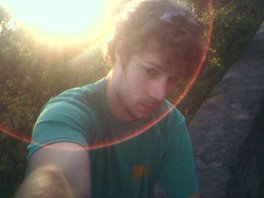BERKELEY, CA - Another step towards quantum computing – the Holy Grail of data processing and storage – was achieved when an international team of scientists that included researchers with the U.S. Department of Energy’s Lawrence Berkeley National Laboratory (Berkeley Lab) were able to successfully store and retrieve information using the nucleus of an atom.
In a paper entitled: “Solid-state quantum memory using the 31P nuclear spin,” published in the October 23 issue of the journal /Nature/, the team described an experiment in which exceptionally pure and isotopically controlled crystals of silicon were precisely doped with phosphorus atoms. Quantum information was processed in phosphorus electrons, transferred to phosphorus nuclei, then subsequently transferred back to the electrons. This is the first demonstration that a single atomic nucleus can serve as quantum computational memory.
John Morton of Oxford University was the lead author. Co-authoring the paper from Berkeley Lab were Thomas Schenkel, Eugene Haller and Joel Ager. Other co-authors were Richard Brown, Brendon Lovett and Arzhang Ardavan of Oxford University, and Alexei Tyryshkin, Shyam Shankar and Stephen Lyon, of Princeton, University.
The immediate lure of quantum computing is blinding speed: a quantum computer would be able to perform certain mathematical tasks, such as factoring, many billions of times faster than the most powerful supercomputers of today. Beyond that, quantum computing should make it possible to engage calculations that cannot be considered with current “classical” computing technology. The secret behind quantum computing is the weird, counterintuitive but demonstrably real properties of quantum mechanics.
In classical computing, information is processed and stored based on the charge of an electron, and represented in a binary digit or “bit.” Each bit carries a value of 0 (no charge) or 1 (charge). Quantum computing utilizes an intrinsic quantum property called “spin,” in which certain particles can act as if they were tiny bar magnets. Spin is assigned a directional state of either "up" or "down,” which can be used to encode data in 0s and 1s. However, unlike charge in classical computing, which is either present or not, spin can be up, down or both, thanks to a quantum effect called “superposition.”
Superpositioning exponentially expands the storage capabilities of a quantum data bit or “qubit.” Whereas a byte of classical data, made up of three bits, can represent only one of the eight possible combinations of 0s and 1s, a quantum equivalent (sometimes called a qubyte) can represent all eight combinations at once. Furthermore, thanks to another quantum property called “entanglement,” operations on all eight combinations can be performed simultaneously.
Of the many challenges facing quantum computing, one of the biggest has been finding a way to preserve the integrity of data while it is stored. Although the spin of electrons has proven well-suited for data processing, it is too fragile to be used as memory – the data quickly becomes corrupted by the influence of other electrons. To overcome this obstacle, the co-authors of this experiment turned to the more protected environs of the atomic nucleus.
“In this exciting collaboration with colleagues from Oxford and Princeton, we have reported on a very important demonstration of coherent information transfer between the electron spin (processing qubit) and the nuclear spin (memory qubit) of phosphorus atoms in isotopically enriched silicon crystals,” said co-author Schenkel, a physicist in Berkeley Lab’s Accelerator and Fusion Research Division, who has been a leader in the use of ion beams for the development of quantum computer test structures. (See A Toolkit for Quantum Computing.)
“The electron spin information was faithfully stored in the nuclear spin for nearly two seconds (thousands of times longer than ever reported for similar studies), then transferred back to the electron spin with about 90-percent fidelity,” Schenkel said.
In this study, the co-authors created a superposition state in electron spin and transferred it to nuclear spin using a combination of microwave and radio-frequency pulses, which they applied to phosphorus-31. This stable isotope of phosphorus is the ideal electron donor for silicon-28, the stable isotope of silicon that is the basis for today’s computer technology. Said lead author Morton in a statement, “The electron acts as a middle-man between the nucleus and the outside world. It gives us a way to have our cake and eat it - fast processing speeds from the electron, and long memory times from the nucleus.”
Crucial to the success of this study were the exceptionally pure silicon-28 crystals created by co-authors Haller and Ager. Haller is a world authority on crystal growth and purification and is credited with launching the modern era of isotopically enriched semiconductor research. Ager designed and built a one-of-its-kind reactor for creating isotopically enriched and chemically pure silicon, featuring a high conversion efficiency.
Said Haller, “Crystals of natural silicon contain 4.7-percent of the isotope silicon-29, in addition to silicon-28 and silicon-30. For this study we needed silicon crystals that were not only chemically pure, but isotopically pure as well because silicon-29 has a nuclear spin that would interfere with the readout of the electron and nuclear spins of the phosphorus.”
Since the silicon crystals to be doped would consist of billions of atoms, creating isotopically pure crystals of silicon-28 was a painstaking process. Once these exceptionally pure crystals were created, they then had to be doped with phosphorus-31 in specific areas of the crystal and to just the right amount – an undertaking that Ager compared to adding one extra person to Earth’s population at one particular address.
Now that it has been demonstrated that electron spin data can be stored and retrieved via nuclear spin, future steps will require improving spin control and readout mechanisms. Also, while the quantum memory time observed in this study is exceptionally long by previous standards, it should still be possible to significantly extend this time.
“The good news is that there are no know physical limits that would prevent quantum memory time in nuclear spin from being longer,” said Ager. “With even greater isotopic and chemical purity of our silicon crystals, we should be able to store data in the nucleus for an arbitrarily long period of time, maybe even in terms of years.”
The Berkeley Lab portion of this research was supported in part by the U.S. Department of Energy’s Office of Science, through the Materials Sciences and Engineering Division of its Basic Energy Sciences programs, and in part
by the National Security Agency.
Berkeley Lab is a U.S. Department of Energy mational laboratory located in Berkeley, California. It conducts unclassified scientific research and is managed by the University of California. Visit our Website at www.lbl.gov/


